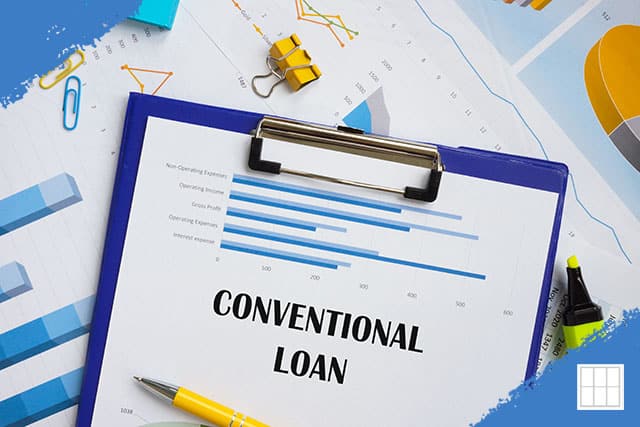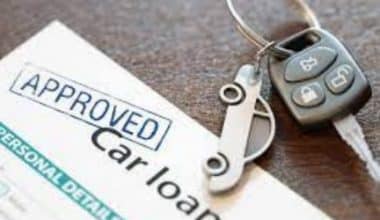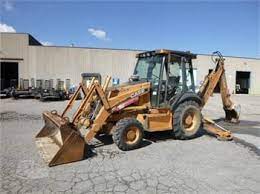The standard mortgage loan is by far the most typical option. You should know what this is and how it operates whether you’re in the market for a home or planning to refinance your current mortgage. There is no such thing as a “conventional loan,” but rather, this word refers to any mortgage that is not backed by the federal government. Mortgages with interest rates that are fixed or adjustable and maturities that range from 15 to 30 years are included. The term “conventional mortgage” can also refer to a jumbo loan or a business loan. In this article, we will discuss conventional loan rates and home conventional home loans.
What Is a Conventional Loan?
A conventional loan is a type of mortgage loan that is not guaranteed by the federal government. In spite of the fact that government-backed mortgages like those offered by the Federal Housing Administration (FHA), the Veterans Administration (VA), and the United States Department of Agriculture (USDA) offer more perks, conventional loans are still the norm.
Conventional mortgage loans are those that are not guaranteed by the federal government. However, a conventional loan is still the most popular mortgage option for most people.
78% of new house sales in the first quarter of 2022 were financed through conventional loans, according to data from the National Association of House Builders.
Here’s some information on conventional loans that will help you decide if they’re a good fit for you if you’re looking to buy a property.
How a Conventional Loan Works
The conventional loan process entails the lender (bank, credit union, or lending agency) acquiring the property and transferring legal ownership to the borrower in exchange for the borrower’s pledge to repay the lender (plus interest).
Interest is the percentage rate you pay the bank for the loan, and it is how the bank makes money off of lending you such a huge sum of money. There are two types of interest rates: those that are set and cannot be changed, and those that are adjusted annually based on economic conditions. A conventional loan’s interest rate is also contingent on the borrower’s credit history and other financial factors.
Although there is a vast variety of mortgage products on the market, conventional mortgages typically fall into a smaller set of categories with regard to interest rates and eligibility requirements. When comparing two various mortgage options, one key contrast is between “conforming” and “nonconforming” loans.
Depending on your financial situation, your salary, and the interest rate you can acquire, you may want to choose between a 15- or 30-year repayment duration for your conventional mortgage loan.
Types of Conventional Loans
#1. Conforming Loans
When it comes to the mortgage industry, two government-sponsored enterprises (GSEs) were established to assist things to operate more smoothly: Fannie Mae and Freddie Mac. Conforming loans are a subset of conventional loans that follow the criteria published by these GSEs. A maximum loan amount of $726,200 in 2023 for a single-family house in most U.S. counties is included in the standards that conforming loans must adhere to.
However, those who don’t need a loan in excess of the conforming loan restrictions but still meet the minimal credit score, DTI, etc. standards for a conforming loan.
#2. Nonconforming or ‘Portfolio’ Loans
Portfolio loans are those that the lender keeps in its own books rather than selling off to a secondary market buyer. Also, portfolio loans are not subject to the stringent criteria set by Fannie Mae and Freddie Mac because they are not intended to be sold to third parties. What this means for borrowers is that portfolio mortgage lenders have more leeway to establish criteria that may make it simpler for them to qualify for a loan.
Borrowers that want more leeway in their mortgage terms, such as lower minimum down payments, less PMI, or larger loan amounts than those allowed by a conventional loan.
#3. Jumbo Loans
A common method in which jumbo loans deviate from Fannie Mae and Freddie Mac’s criteria is that they have a larger loan amount than what is allowed. Lenders of jumbo loans see them as riskier because of this, making it difficult to get approved for one. Interestingly, though, this does not always translate into higher interest rates.
High-balance loans are not the same thing as jumbo loans. In counties classified as high-cost by the Federal Housing Finance Agency (FHFA), borrowers who need a loan higher than $726,200 may be eligible for a high-balance loan that is still considered a conventional, conforming loan.
In addition, those who want a loan but can’t qualify for a conforming loan in their county.
#4. Adjustable-Rate Mortgages
Adjustable-rate mortgages (ARMs) are loans in which the interest rate fluctuates periodically over the life of the loan. Borrowers should be aware that adjustable-rate mortgages (ARMs) often start with a lower interest rate (relative to a standard fixed-rate mortgage) for an introductory period but then climb after that. The parameters of the loan dictate the manner and timing of the increase: A 5/6 loan, for example, has a fixed interest rate for the first five years and then fluctuates every six months.
It’s possible for borrowers to save money with an adjustable-rate mortgage if they can refinance or sell their home before the conclusion of the fixed-rate introductory term.
#5. Low-Down-Payment and Zero-Down Conventional Loans
A 100% financing mortgage, sometimes known as a “zero-down” loan because no cash is needed for a down payment, is one of several alternatives available to homebuyers.
There are a variety of 3% down payment lending programs available to qualified buyers. These include Freddie Mac’s Home Possible® and HomeOne loans, Fannie Mae’s HomeReady® loan, and the conventional 97% loan. However, the income thresholds and eligibility conditions vary slightly amongst programs.
Those who don’t have access to a sizable down payment, who wish to increase their down payment to avoid private mortgage insurance premiums, or who wish to divide their loan amount to avoid a “jumbo” loan.
Required Documentation for a Conventional Loan
After the 2007 subprime mortgage crisis, lenders tightened loan standards, eliminating “no verification” and “no down payment” mortgages but leaving most of the essential conditions unchanged. To apply for a home loan, prospective borrowers must fill out formal paperwork, generally with an associated charge, and then provide the lender with the documentation they need to conduct a thorough investigation of the applicant’s identity, financial history, and credit standing.
Financing for a single property can never reach the full asking price. Lenders look beyond the standard rule that mortgage payments shouldn’t exceed 28% of monthly gross income when assessing your financial stability.
Lenders may also consider your ability to pay for the property’s down payment (and how much of a down payment you can afford) and other upfront charges, such as those associated with the loan’s origination or underwriting as well as any broker fees and settlement or closing costs. Items that must be present include:
#1. Assets
In order to demonstrate that you have sufficient finances for the down payment, closing expenses, and cash reserves on the property, you will be required to submit statements from both your bank account and any investment accounts that you maintain. You will need gift letters in the event that you get money from a friend or relative in order to assist with the down payment. These letters attest that the funds are not loans and do not have any needed or mandatory return terms. Notarization is usually necessary for letters of this nature.
#2. Documentation Proving Your Income
These documents may include, but are not limited to, the following items:
- Pay stubs for the previous thirty days that detail income, in addition, to year-to-date income
- Two years worth of returns to the federal government
- Statements of all of your asset accounts every sixty days or once every three months, including your checking, savings, and any investment accounts you may have.
- W-2 forms from the previous two years.
Borrowers also need to be ready with evidence of any additional income, such as alimony or bonuses, in order to be approved for a loan.
#3. Employment Eligibility Checking
Lenders in today’s market want to be certain that they are only providing loans to borrowers who have a consistent employment background. Not only will your lender request to view your pay stubs, but they may also call your company to confirm that you are still employed and inquire about your compensation. If you have switched jobs over the past few months, a lender may wish to get in touch with your former company. Borrowers who are self-employed will be required to furnish a substantial amount of supplementary documentation concerning their businesses and incomes.
#4. Private mortgage insurance (PMI)
When you get a conventional loan, if your down payment is less than 20% of the total purchase price, you will most likely be required to pay private mortgage insurance, sometimes known as PMI. On the other hand, eliminating mortgage insurance on a conventional loan is a far more manageable task than it is on an FHA loan. After reaching a loan-to-value ratio of 80% or less, which indicates that your mortgage balance is less than 80% of the home’s appraised value, you may be eligible to have your private mortgage insurance canceled. This occurs as the balance of your loan is paid down and the value of your house improves over time.
Conventional Mortgage/Loan Considerations
These loans aren’t right for everyone. Find out in this article who can and cannot apply for a conventional loan.
Inclusion Criteria: A Conventional loan is often available to those with established credit and pristine credit histories who are also financially stable. To be more precise, the ideal candidate will have:
- An adequate or superior FICO score. A borrower’s credit score is a numeric evaluation of how likely they are to repay a loan. A borrower’s payment history and the number of days they were late are both factors in their credit score. Approval can be contingent on having a credit score of 620 or above. The interest rate on a conventional loan is also inversely proportional to the borrower’s credit score, with the best rates and terms being reserved for those with the highest scores. Also, read CREDIT SCORE FOR MORTGAGE: Detailed Guide.
- A manageable ratio of debt to income (DTI). Your total monthly debt payments (including those for credit cards and loans) as a proportion of your gross monthly income. The optimal range for the DTI ratio is 36% to 43%. To rephrase, your total monthly loan payments shouldn’t exceed 36% of your income.
- A down payment on the house that is equal to at least 20% of the price. Even if a lender does agree to a lower down payment, they may still require private mortgage insurance with monthly premium payments until the borrower has 20% equity in the home.
Additionally, homebuyers who want the dwelling for investment purposes or as a second home, or who wish to purchase a property priced at over $500,000, frequently have no choice but to pursue traditional financing.
Who Is Not Eligible for a Conventional Loan?
Many people have problems getting approved for a conventional loan since they are either just starting out in life, have slightly more debt than is typical or have a modest credit score. The following characteristics make it difficult for borrowers to qualify for these loans:
- Have recently gone through a foreclosure or bankruptcy
- Credit ratings under 650
- Over a 43% DTI
- A down payment of less than 10% of the home’s price is common.
In addition, if you are denied a loan, you should definitely request an explanation as to why. There are other mortgage assistance programs for which you might be eligible.
If you’re a first-time homebuyer with no credit history, for instance, you may be eligible for an FHA loan. Those who are purchasing their first home are prime candidates for an FHA loan. As a result, the criteria and credit requirements for FHA loans are varied, including a reduced required down payment.
Conventional Loan Rate
Because of fluctuations in the economy and the mortgage market, interest rates are subject to daily fluctuations. The best time to get a conventional loan (or any loan) is now when interest rates are still low. It might be challenging to forecast, even for professionals.
After the seller accepts your offer and you’ve settled on a mortgage rate, that’s when you should lock it in. Applying for conventional loan refinancing allows you to lock in a fixed interest rate.
Locking a rate with Better Mortgage secures not only the rate you choose but the whole daily rate table. You can alter your mind even after you’ve locked it if you like. As long as you complete your conventional loan before the rate lock expires, you won’t be affected by a rise in rates, which your Better Mortgage Home Advisor can explain.
How to Get the Best Conventional Loan Rate
Your interest rate is the second most important factor in determining your conventional loan payment each month, behind the purchase price of the home. High-interest rates may limit your home budget because more of it goes toward paying for it.
You may feel helpless at the mercy of lenders and the market, but there are things you can do to increase the likelihood of getting a better interest rate, which could save you tens of thousands of dollars and allow you to buy more houses.
#1. Increase Your Creditworthiness
One of the best ways to lower your conventional loan rate is to improve your credit score. You can acquire a loan with a poor credit score, but you may not get the lowest rate.
Vice President of the NAMB Valerie Saunders adds, “A credit score is always an important factor in determining risk.” When deciding whether or not to grant credit to a potential borrower, lenders will take the score into consideration. When a borrower has a high credit score, it’s more likely that their loan will be paid on time.
A credit score of 620 or higher is frequently necessary to qualify for a standard mortgage. However, only those with the greatest credit scores (often 740 or higher) qualify for the best mortgage rates. In general, the interest rate offered will reflect the lender’s belief in the borrower’s capacity to make timely payments.
Reducing or eliminating credit card debt is a great way to raise your credit score. If you must carry a balance, it’s best not to utilize more than 20% to 30% of your credit limit. Look for errors on your credit report and score by checking them frequently. In addition, make sure everything is in order before applying for a mortgage if there are any discrepancies.
#2. Consider Paying Points
Mortgage borrowers can pay a discount point to lower their interest rate by one percentage point. Mortgage rates can be lowered by one-quarter of one percent for every point paid, or one percent of the loan amount.
However, discount points require a large initial investment followed by little monthly savings. Your monthly savings will increase proportionally with the number of points you purchase. If you want to save more than $100 each month, you should expect to pay three or four discount points. It will be a while until the sum of your savings is more than what you paid in. This payback duration is sensitive to loan size, point price, and interest rate.
The mortgage points calculator on NerdWallet will help you determine the possible savings of paying points and the break-even time. If it takes longer to break even than your stay in the residence, buying points may not be worth it.
Mortgage rates can be lowered from 6.875% to 6.50% by paying one discount point ($3,000) on a $300,000 loan. This would result in a $50 savings per month and a break-even point of five years.
#3. Acquire a History of Consistent Employment
Lenders will give you greater consideration if you can show that you have been gainfully employed for at least two years, especially with the same company. Mortgage applications require two years’ worth of W-2 forms and the most recent 30 days’ worth of pay stubs. You’ll also need to show proof of any commissions or bonuses you receive.
If you’re self-employed or your income comes from a variety of part-time employment, it may be more challenging, but not impossible, to qualify. If you’re self-employed, you may need to supply business records like profit-and-loss accounts in addition to tax returns.
What if you are a new college grad or a seasoned professional looking to get back into the workforce? Job offers, including salary expectations, make it easier for lenders to verify your employment. If you are currently working but have a new job lined up, the same rules apply to you. However, keep in mind that lenders may raise red flags if you are switching to an entirely different industry.
Having a break in your employment history isn’t necessarily a dealbreaker, but the length of that break will. If you were out of work due to illness, you may be able to explain the absence to your lender. However, if you have been jobless for six months or more, approval may be more difficult to come by.
#4. Put Together a Down Payment Fund
If you can afford a 20% down payment, you may be able to lower your mortgage rate. However, if your down payment is less than 20%, you will likely be required to pay private mortgage insurance, which typically ranges from 0.58% to 1.86% of the loan’s principal each year. Paying down your mortgage below 80% of the home’s value eliminates mortgage insurance and lowers your monthly payment.
If you’re a first-time buyer and you don’t have enough money for a 20% down payment, you can get help. Each program has its own set of requirements for participation, but income and first-time homeownership status are common considerations.
#5. Evaluate Mortgage Rates From Several Companies
Whether you’re refinancing or not, it’s important to shop around for the best mortgage rate you can get. According to a new Freddie Mac study, you should shop around for the best interest rate. Savings of roughly $1,200 per year and nearly $6,000 over the course of the loan’s first five years are possible, for example, if you secure a 6-percent interest rate instead of a 6.5-percent one on a $300,000, 30-year mortgage.
Start with your bank or credit union, but also talk to other lenders and search online. You’ll find that different lenders’ offers come with varied fees, closing costs, and private mortgage insurance premiums (to name just a few of the expenses that can really pile up when you compare quotations), even if the interest rates are equal. If you compare different offers, you can pick the one that suits you best.
Saunders advises that potential borrowers “shop and compare based on the loan estimates received.” You wouldn’t buy a car without taking it for a spin, right? Put that loan through its paces before you commit to the purchase.
What Affects Conventional Loan Rate?
The Federal Reserve’s monetary policy affects mortgage rates indirectly. Short-term interest rates have increased due to the Federal Reserve’s one hike of the federal funds target rate in 2023. As a result, lenders typically increase mortgage interest rates to cover their own increased funding costs, which are then passed on to borrowers.
Conventional Loan rates are affected by monetary policy, but lenders also play a role. A mortgage lender with multiple branches and substantial overhead may need to charge higher interest rates in order to turn a profit. However, because they have fewer overhead expenses, online-only lenders can afford to offer more competitive mortgage rates.
Last but not least, the conventional loan rate you’re offered depends on your personal credit history. Lenders charge higher interest rates to borrowers with poor credit histories and scores (less than 670).
How To Compare Conventional Loan Rates
Borrowers who browse around for the best interest rates typically find a better deal than those who settle for the first lender they discover. To begin going, go online and do some rate comparisons. However, applying for a mortgage with various lenders or a mortgage broker will get the most accurate quote.
Working with a broker might save you time and benefit from the broker’s loan industry knowledge. For instance, they may be able to find you a mortgage lender who is well-suited to your specific requirements, be they for a large loan amount or a small down payment. However, you may be required to pay a commission to the broker.
In today’s digital era, mortgage applications are available online from the majority of lenders. In addition, your credit score won’t take a hit if you apply for several mortgages at once, as each inquiry is often treated as a separate inquiry.
Finally, remember to consider the APR along with the interest rate when comparing loan offers. The annual percentage rate (APR) displays the overall annual cost of your loan.
Conventional Loan Pros and Cons
Conventional loans, as opposed to government-backed options like the FHA or VA loan, have a number of advantages. There are fewer costs involved because you won’t have to pay the funding fee associated with a VA loan or the upfront mortgage insurance payment required by FHA loans. With a conventional loan, you can eliminate PMI with less hassle.
Also, a conventional loan has certain downsides, the most significant being the requirement of better financial standing as a prerequisite for approval. The down payment and credit score criteria for conventional loans are often greater than those for government-backed mortgages. For this reason, they aren’t always the greatest choice for a first-time buyer’s mortgage.
Pros
- Low costs. If your credit score is high, you may be able to get a better interest rate. In addition, once your loan-to-value ratio hits 80%, you can submit a request to have the insurance requirement waived. The FHA mortgage insurance premium and USDA guarantee fee may stay the same throughout the term.
- Ample leeway for the picky. Because they are not bound by the regulations imposed by government organizations, private mortgage lenders can be more flexible with conventional loans than they are with government-insured loans.
- Greater borrowing caps. A jumbo conventional loan allows you to borrow significantly more than the maximum allowable by a conforming loan. Government-guaranteed loans might not provide you with such leeway.
Cons
There are advantages to acquiring a conventional loan as opposed to a government-backed credit, but there are also some drawbacks to think about.
- Higher minimum credit scores. If you want a conforming conventional loan, your credit score needs to be at least 620, which is greater than the requirements for some government-backed loans.
- Higher down payment requirements. First-time buyers can get into a home with as little as a 3% down payment under certain conventional lending programs, but subsequent buyers will have to put down at least 5%. FHA loans need a minimum down payment of 3.5%, whereas USDA and VA loans require zero down.
- Tougher requirements for participation. A government-insured mortgage loan may be simple to obtain if you meet the requirements of the granting agency. However, because the lender is taking on additional risk by originating a conventional loan, the lender may look more closely at your personal financial condition.
How Is a Conventional Loan Different From a Government-Backed Loan?
Certain homebuyers may be a suitable fit for government-insured mortgage loans due to the loans’ unique features. Here’s a rundown of the possibilities and who would want to pursue them:
- VA loans. Veterans Affairs (VA) loans are available to qualified service members, veterans, and their families without the need for a down payment or mortgage insurance.
- FHA loans. Credit scores as low as 500 are acceptable for an FHA loan with a 10% down payment, and 580 are required for a 3.5% down payment.
- USDA loans. Those with low to moderate incomes might benefit from USDA loans because there is no need for a down payment.
You should know that private lenders, the same ones who give traditional loans, make these available to borrowers even if they are insured by the government.
The best choice between a conventional loan and a government-insured loan will vary from person to person. Government-backed loans provide advantages if you don’t have great credit or a big down payment, but they’re hard to get.
With a conventional loan, you can save more money by making a larger down payment or having better credit. Evaluate several loan programs and weigh their advantages and disadvantages to select the best one for your needs.
Conclusion
There are a lot of reasons why conventional mortgages are so common. This loan type has fewer restrictions than government-backed loans and can be used to fund a wider variety of properties. A conventional loan may also have lower fees. Borrowers who are able to meet the stringent requirements will find this to be a very attractive option.
Frequently Asked Questions
What is the maximum loan amount?
Credit limits are the maximum amounts you can borrow on credit cards, personal loans, mortgages, and other loans. Lenders base loan amounts on debt-to-income ratio, credit score, credit history, and financial profile.
What is conventional loan best for?
Those who have excellent credit and can afford a greater down payment should look into conventional mortgages. A conventional loan may be a smart financial option because of the lower interest rates and longer loan durations. Conventional home loans come in two flavors: fixed-rate and adjustable-rate mortgages.
What is the highest loan to value on a conventional loan?
Some of these loans permit an LTV of 97%, even though the standard LTV for traditional credit programs is 80%. For any conventional loan with a loan-to-value (LTV) ratio of 80% or more, private mortgage insurance (PMI) is required.
Similar Articles
- HOW TO GET A BANK LOAN: All You Need to Know
- CREDIT SCORE TO BUY A HOUSE: Good Credit Scores, and How to Improve It
- Application Letter For Loan: How To Write A Loan Request Application In Nigeria
- CREDIT SCORE FOR A HOME LOAN: Low, High, and Ideals Credit Loan
- Unsecured Loan for Bad Credit: How to Get one






